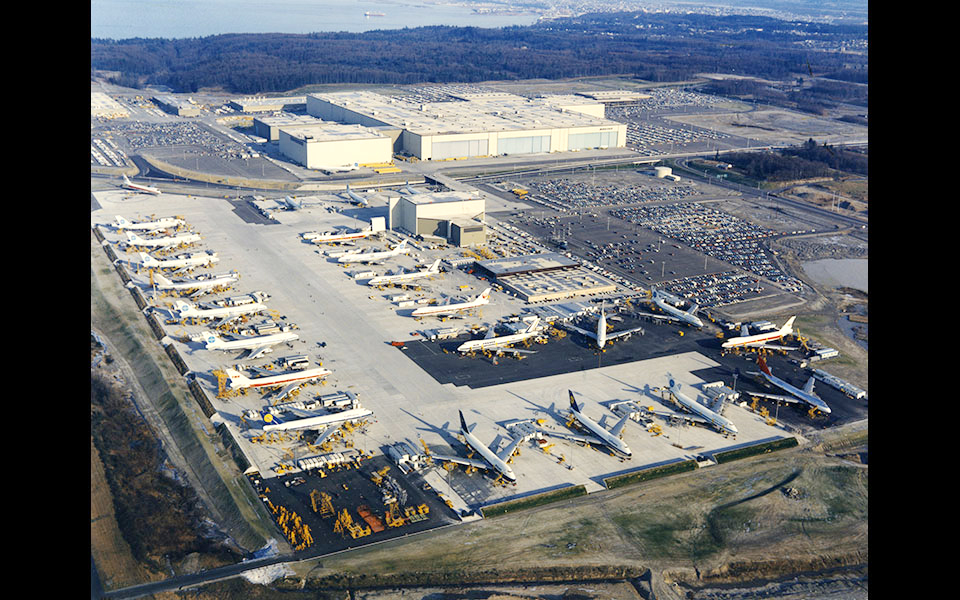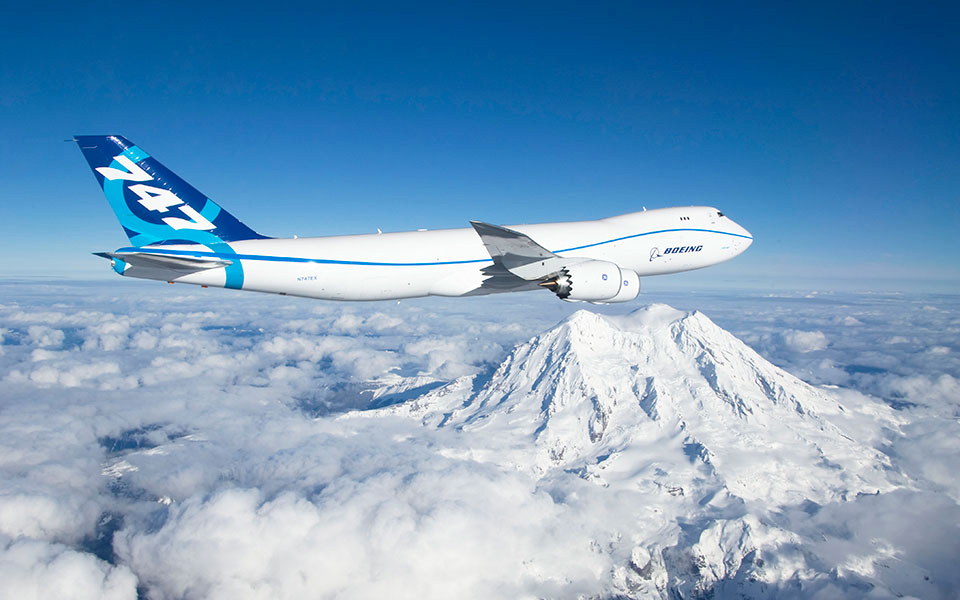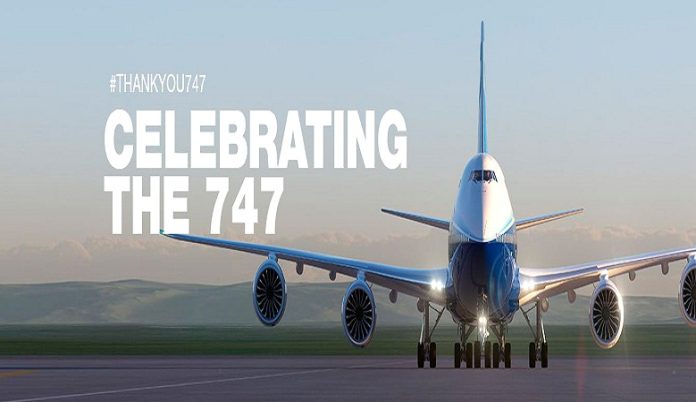By Techno Crat
Boeing’s 747 Jumbo jet, an iconic symbol of the aerospace industry, was introduced in 1969 and has since become a legend in the aviation world. With its distinctive hump, the 747 revolutionised air travel, allowing airlines to transport more passengers and cargo than ever before.
The 747 was the brainchild of Juan Trippe, the founder of Pan American World Airways, who saw the need for a larger and more efficient aircraft to meet the growing demand for air travel. Trippe approached Boeing with his vision, and the company took up the challenge, creating what would become one of the most successful aircraft in history.
The design process for the 747 was a monumental undertaking, with Boeing investing more than $1 billion and employing over 50,000 people to bring the project to fruition. The biggest challenge was developing the massive engine required to power the 747, and it took four years of research and development before the Pratt & Whitney JT9D engine was ready.
On January 15, 1970, the first Boeing 747 took to the skies, embarking on a test flight that would last for two and a half hours. The aircraft was an instant success, with airlines around the world placing orders for the new Jumbo jet.
The 747’s success was due in part to its incredible size, which allowed airlines to transport more passengers and cargo than ever before. The aircraft’s unique design, with its upper deck and hump, also made it instantly recognizable and helped it to capture the public’s imagination.
Over the next few decades, the 747 became a fixture of the airline industry, with more than 1,500 of the aircraft built. The Jumbo jet was used for a wide range of applications, from transporting passengers on long-haul flights to serving as a cargo plane for the military.
However, despite its success, the 747 faced increasing competition from more modern and fuel-efficient aircraft such as the Boeing 777 and Airbus A380. As a result, Boeing announced in 2016 that it would discontinue the 747 production line, with the final aircraft being delivered in 2022.
While the end of the 747 production line is undoubtedly a sad moment for the aviation industry, the Jumbo jet’s legacy will live on for many years to come. The 747 was not just an aircraft; it was a technological marvel that changed the course of aviation history.


The 747 was instrumental in making air travel accessible to the masses, allowing people to travel farther and faster than ever before. It also paved the way for the development of other large aircraft, such as the Airbus A380, which owes much of its design to the 747.
In addition to its impact on air travel, the 747 also played a vital role in shaping popular culture. The aircraft was featured in numerous films, including Air Force One and Die Hard 2, and was a favourite of aviation enthusiasts around the world.
Today, the 747 can be seen in museums and aviation collections around the world, where it serves as a testament to the ingenuity and innovation of the aerospace industry. While the Jumbo jet may no longer be in production, its impact on the aviation world will be felt for many years to come.
The Air India Jumbos
The jumbo jets of Air India, specifically the Boeing 747, played a significant role in the airline’s history and were considered special in many ways.
Air India was one of the first airlines to order the Boeing 747, with the first aircraft being delivered in 1971. The airline went on to operate a fleet of 18 Boeing 747s over the next few decades, making it one of the largest operators of the aircraft in the world.
The Boeing 747 allowed Air India to expand its international network and transport more passengers and cargo than ever before. The airline used the aircraft on a range of routes, from short-haul flights within Asia to long-haul flights to Europe and North America.
Air India’s Boeing 747s were also known for their luxurious interiors, which featured spacious cabins, comfortable seats, and high-quality amenities. The airline’s first-class cabin was particularly renowned, with passengers enjoying private suites, gourmet cuisine, and personalized service.


The Boeing 747s of Air India were also used for a range of special missions, including transporting Indian troops and evacuating Indian citizens from war-torn countries. The aircraft played a crucial role in these missions, demonstrating their versatility and reliability.
One of the most memorable moments in the history of Air India’s Boeing 747s was the inauguration of the airline’s direct flight from Mumbai to New York in 1988. This flight, which was operated by a Boeing 747-400, was the longest non-stop flight in the world at the time, covering a distance of over 12,000 km.
Air India’s Boeing 747s were retired from service in 2018, marking the end of an era for the airline. However, the aircraft will always hold a special place in the airline’s history and the hearts of aviation enthusiasts around the world.
The jumbo jets of Air India, particularly the Boeing 747, were special in many ways. They allowed the airline to expand its network, transport more passengers and cargo, and provide luxurious amenities to its passengers. The aircraft were also used for a range of special missions and played a significant role in the airline’s history.
Retiring the Jumbos
The retirement of Jumbo jets by all airlines is an ongoing process, and there is no specific date or time period for when this will occur. However, several airlines have already retired their jumbo jets the Boeing 747 – due to a combination of factors, such as high operating costs, a shift towards more fuel-efficient aircraft, and the impact of the COVID-19 pandemic on the aviation industry.
In recent years, several major airlines have retired their Boeing 747s, including British Airways, Delta Air Lines, Qantas, United Airlines, and more. In some cases, the retirement was announced well in advance, while in others, it was a sudden decision due to the pandemic’s impact on air travel.


However, it is worth noting that some airlines continue to operate the Boeing 747 and other jumbo jets, such as the Airbus A380. These airlines include Lufthansa, Korean Air, and China Airlines, among others.
While the Boeing 747 and other jumbo jets may eventually be retired by all airlines, they will always hold a special place in aviation history. These aircraft have played a significant role in shaping the industry, allowing airlines to transport more passengers and cargo than ever before and opening up new routes and destinations around the world.
Huge Indian market
India’s airline industry has undergone explosive growth in recent years, driven by a combination of factors, including a growing middle class, increasing urbanization, and the government’s liberalization of the aviation sector. This growth has not gone unnoticed by foreign aircraft manufacturers, including Boeing, Airbus, and Embraer, who are eyeing this market with great interest.
The Indian airline industry has come a long way since the early days of aviation in the country. The first commercial flight in India took place in 1911, and for many years, the industry was dominated by state-owned carrier Air India. However, the industry began to change in the 1990s, when the government started to deregulate the sector, allowing private airlines to enter the market.
Today, the Indian airline industry is a vibrant and rapidly growing sector, with more than 100 million passengers travelling by air each year. According to the International Air Transport Association (IATA), India is projected to become the world’s third-largest aviation market by 2025, after the United States and China.
One of the key drivers of the growth in the Indian airline industry is the country’s growing middle class. With a population of more than 1.3 billion people, India has a huge potential market for air travel. As more and more people join the middle class, there is a growing demand for air travel, both for business and leisure.
Another factor contributing to the growth of the Indian airline industry is increasing urbanization. As more people move to cities, there is a growing need for air travel to connect different parts of the country. This has led to the development of a number of regional airlines in India, such as IndiGo, SpiceJet, and GoAir, which cater to the growing demand for air travel in smaller cities and towns.
With this has been added the muscle of the recently privatised Air India, which created history by ordering a record 470 aircraft from Boeing and Airbus recently.


The Indian government’s liberalization of the aviation sector has also played a crucial role in the growth of the industry. In recent years, the government has implemented a number of reforms to make it easier for foreign airlines to operate in India, including allowing 100% foreign direct investment in the sector.
All of these factors have led to a surge in demand for new aircraft in India, and foreign aircraft manufacturers are eager to capitalize on this growth. Companies like Boeing, Airbus, and Embraer are all eyeing the Indian market with great interest, and are investing heavily in the country.
Boeing, for example, has a significant presence in India, with more than 7,000 employees working across the country. The company has also established partnerships with Indian airlines like SpiceJet and Vistara, and is investing in the development of new technologies and facilities in the country.
Airbus, too, is actively expanding its operations in India, with a new facility in Hyderabad that produces parts for its aircraft. The company is also working closely with Indian airlines like IndiGo and GoAir to help them modernize their fleets and improve their operations.
Embraer, the Brazilian aircraft manufacturer, is also eyeing the Indian market with interest. The company recently announced that it is setting up a new aircraft assembly plant in the country, which will produce planes for Indian airlines.





















